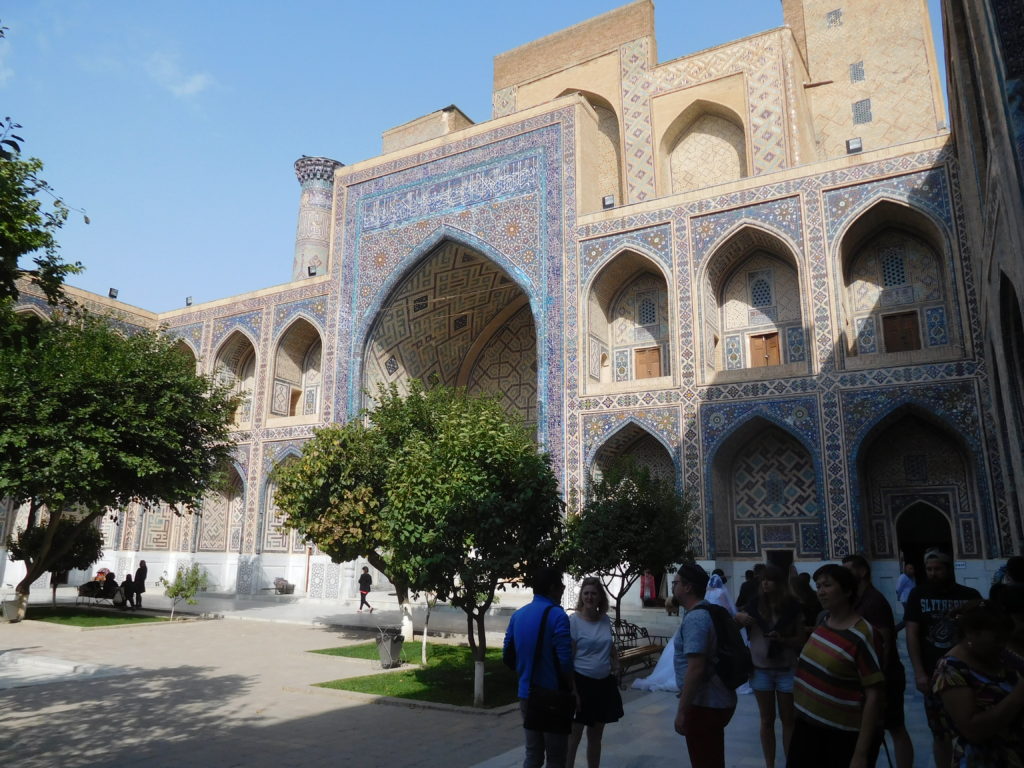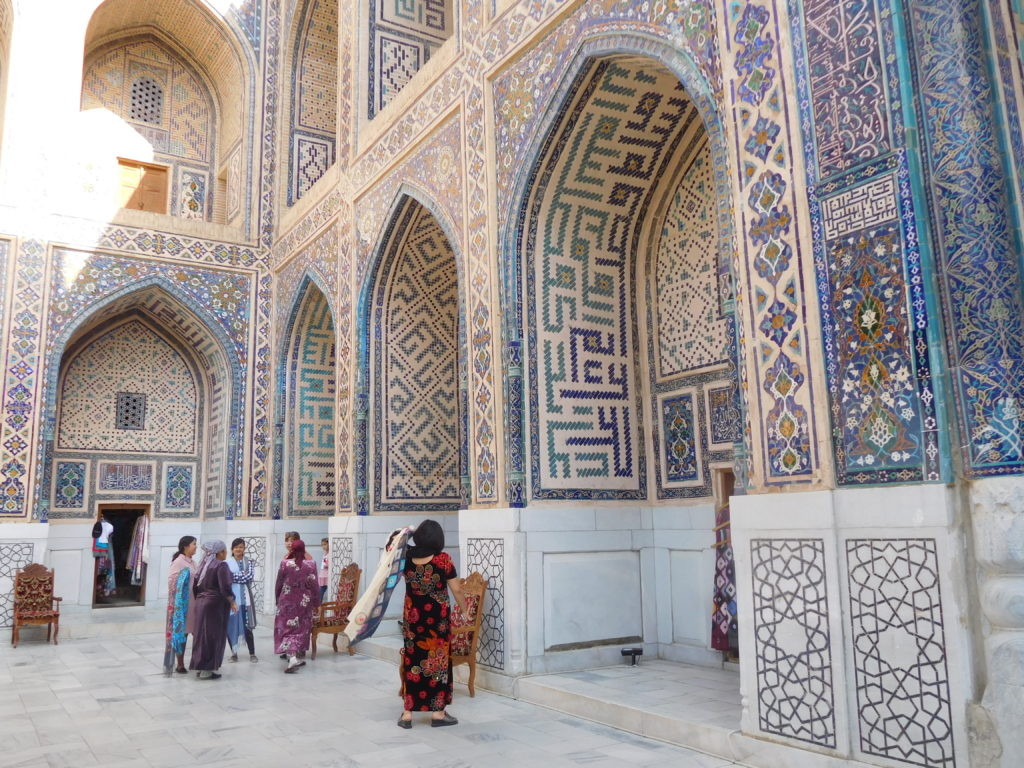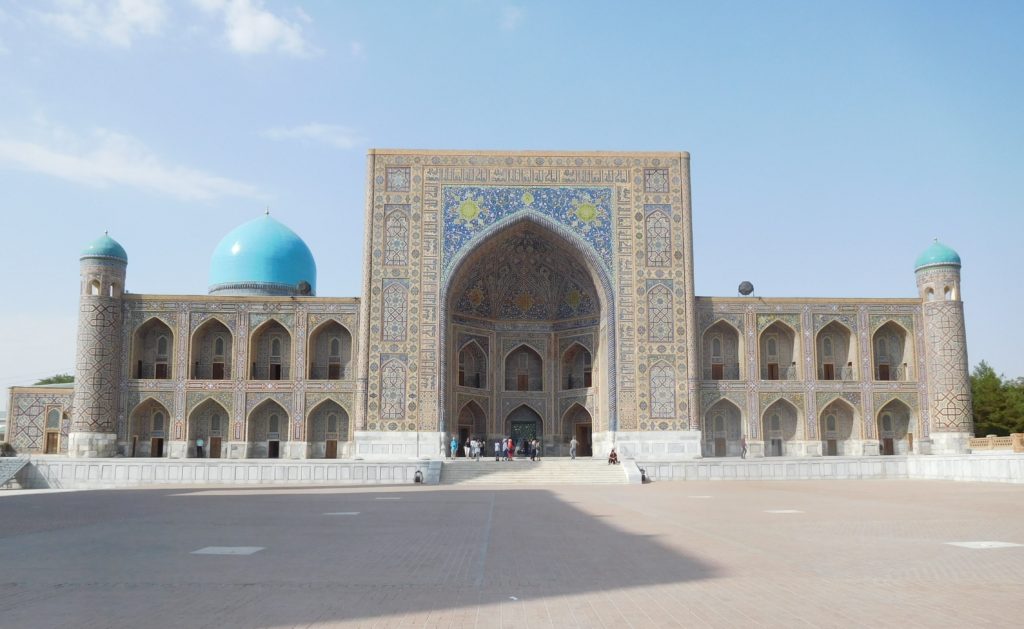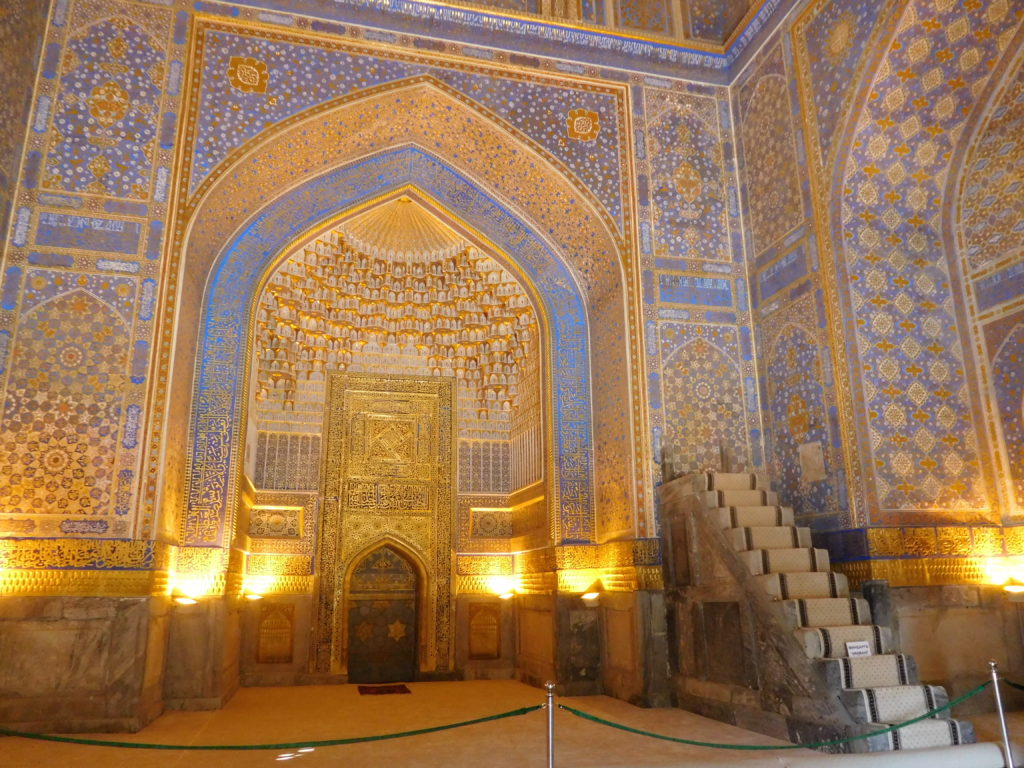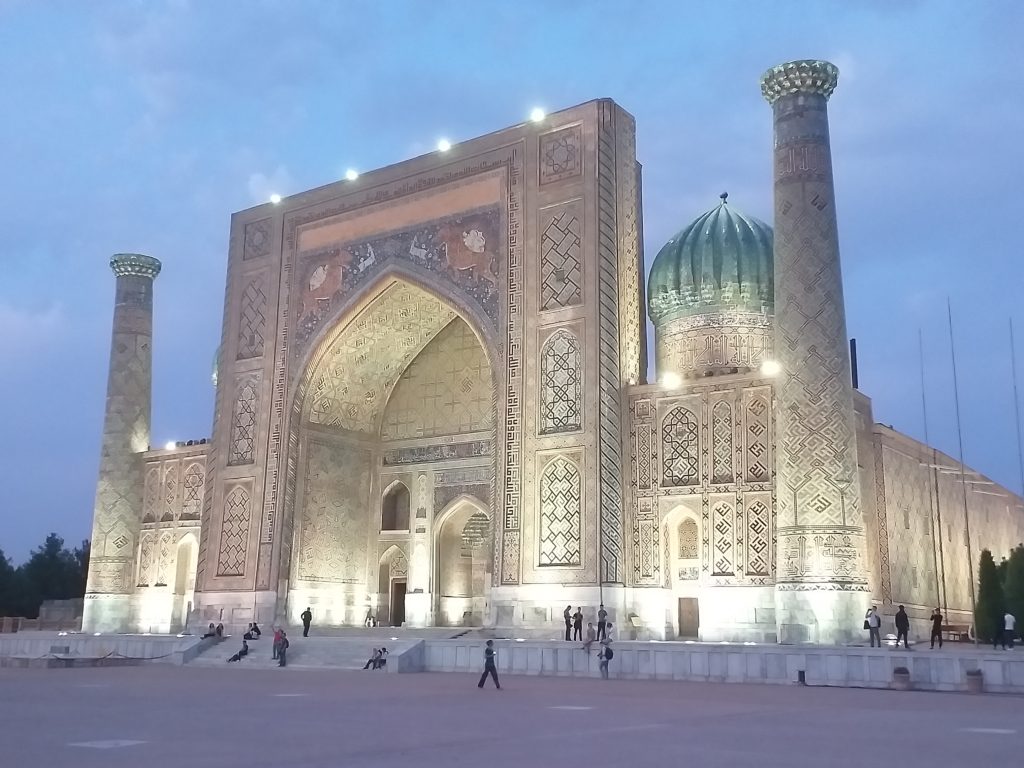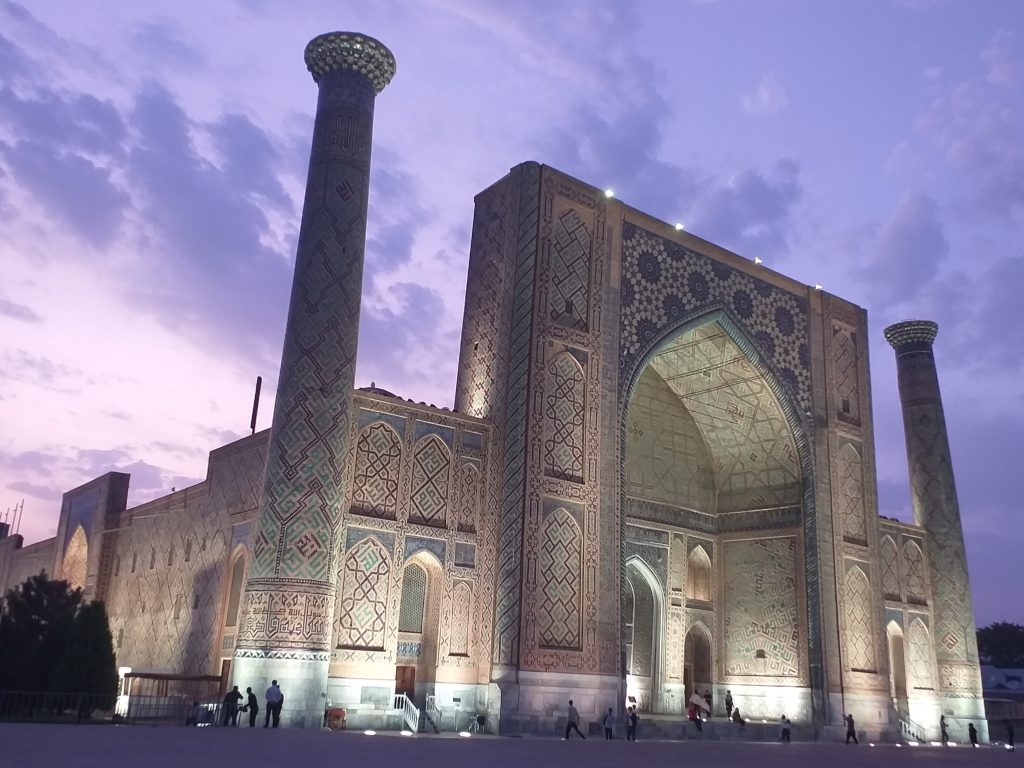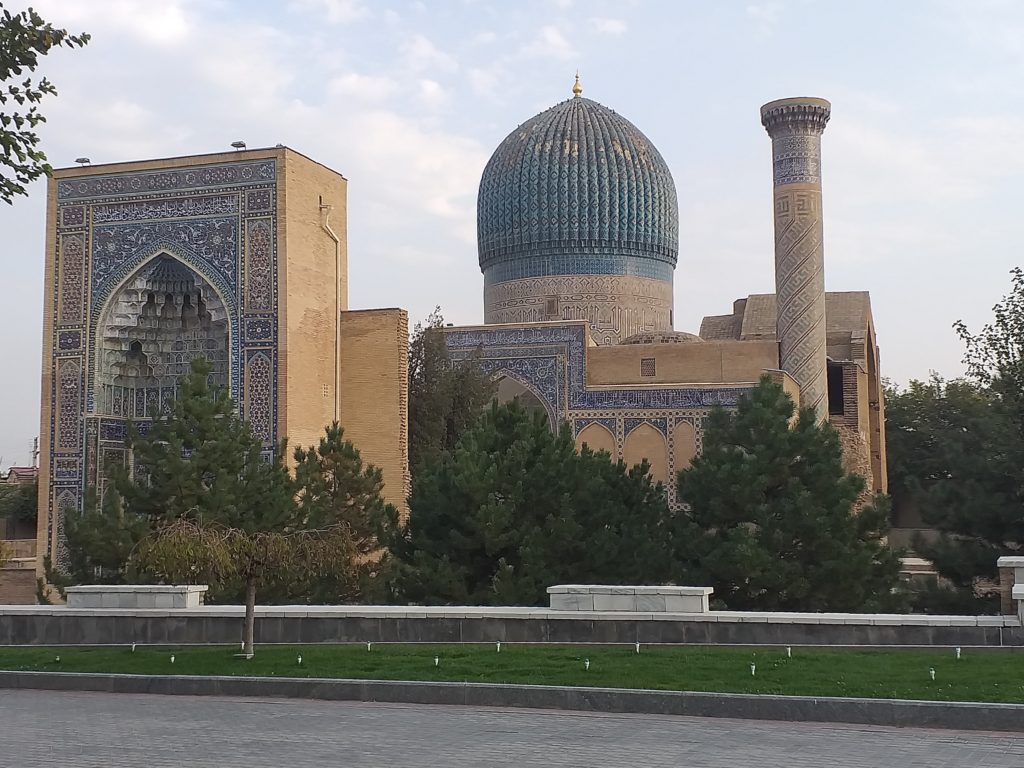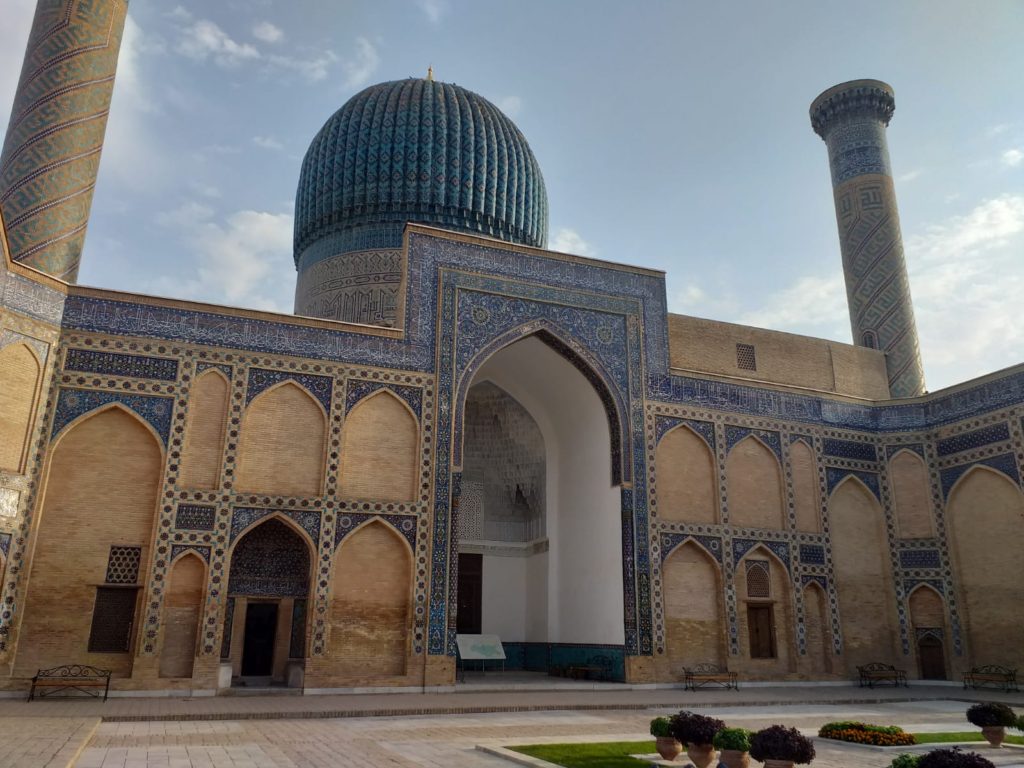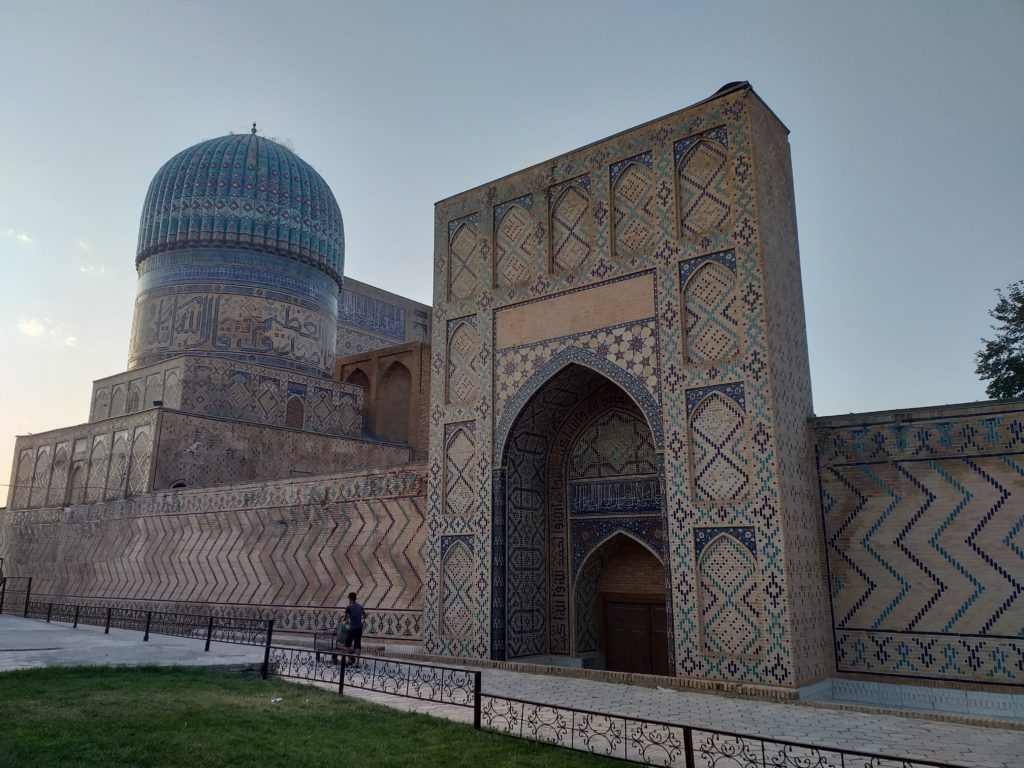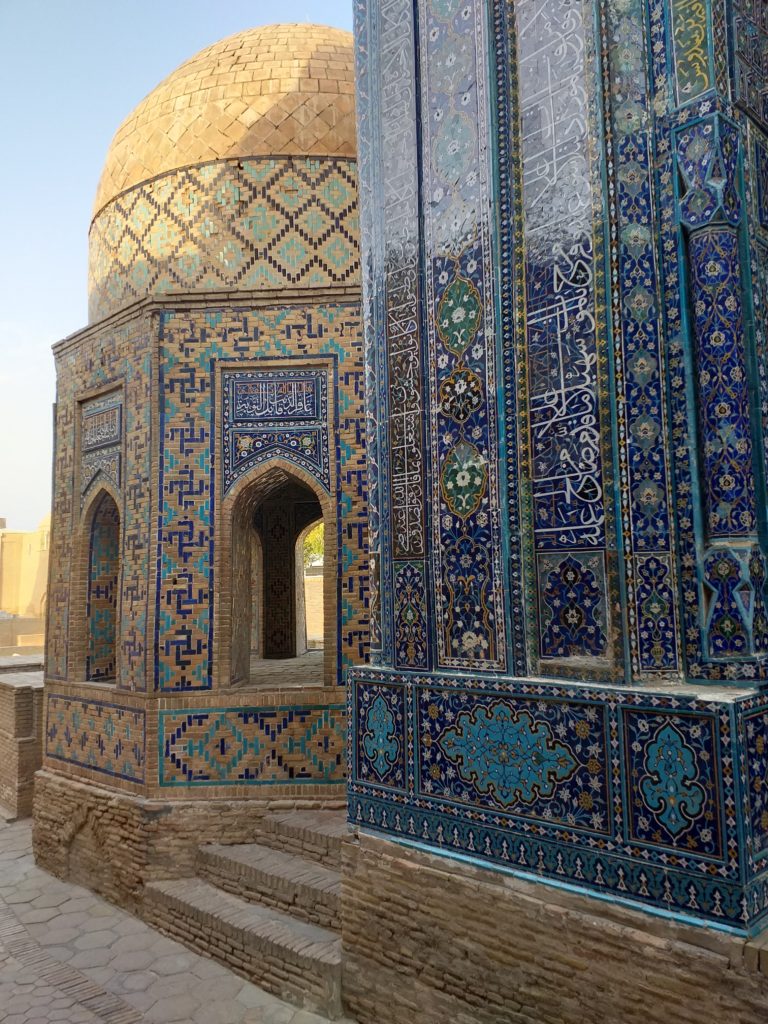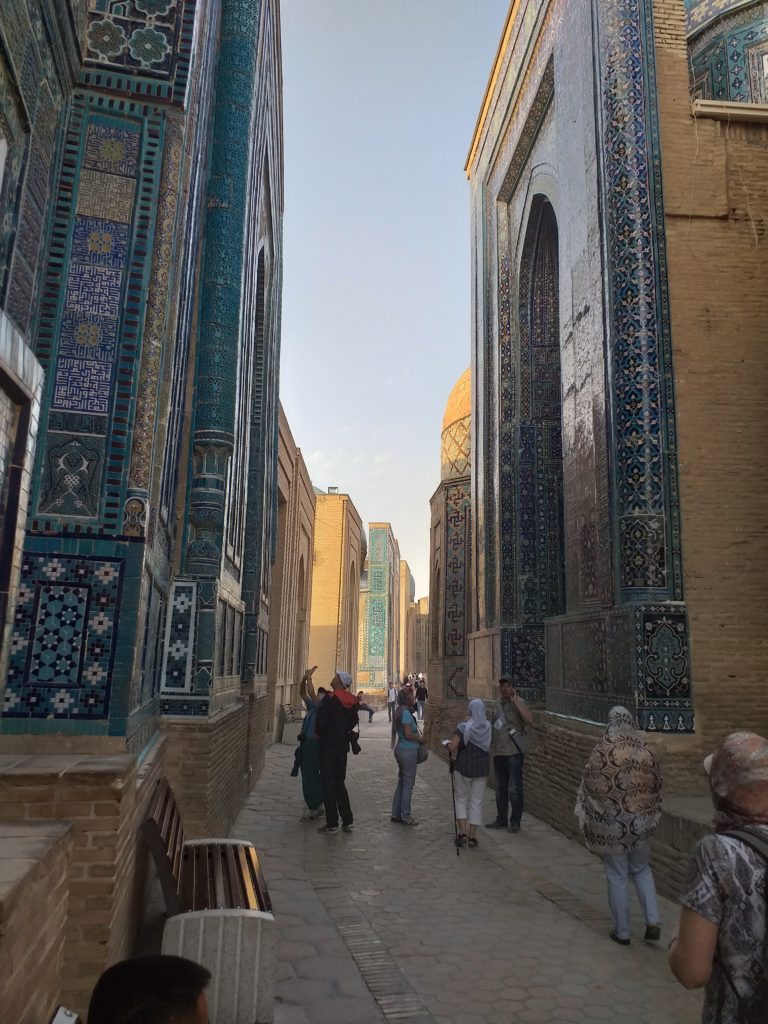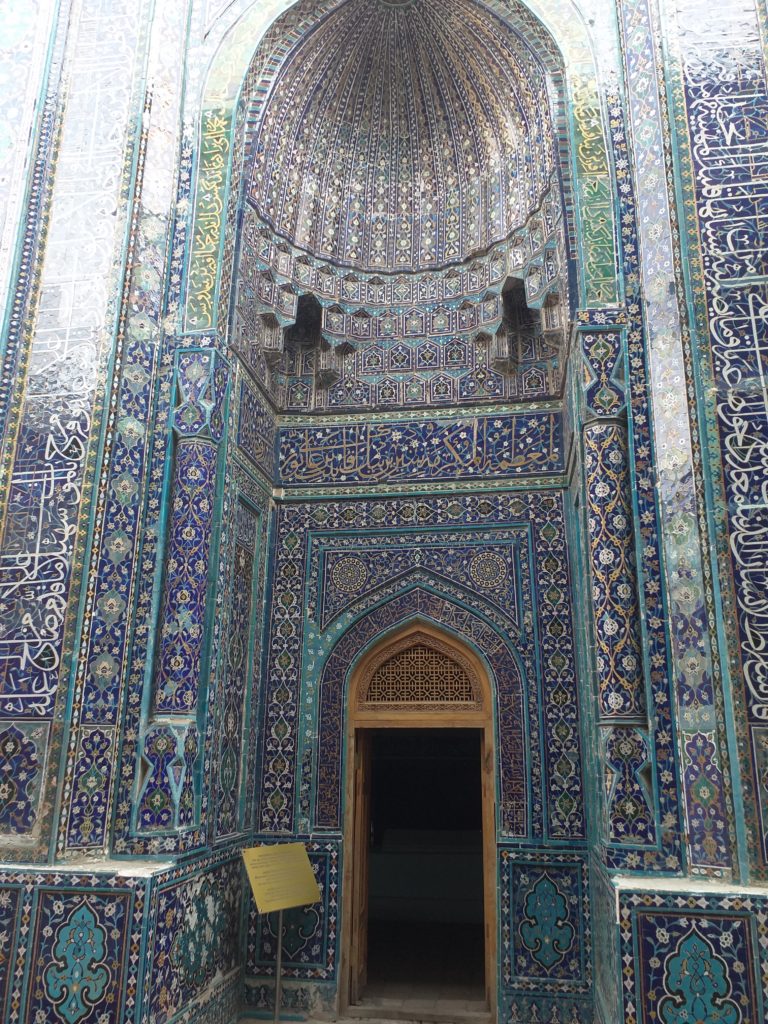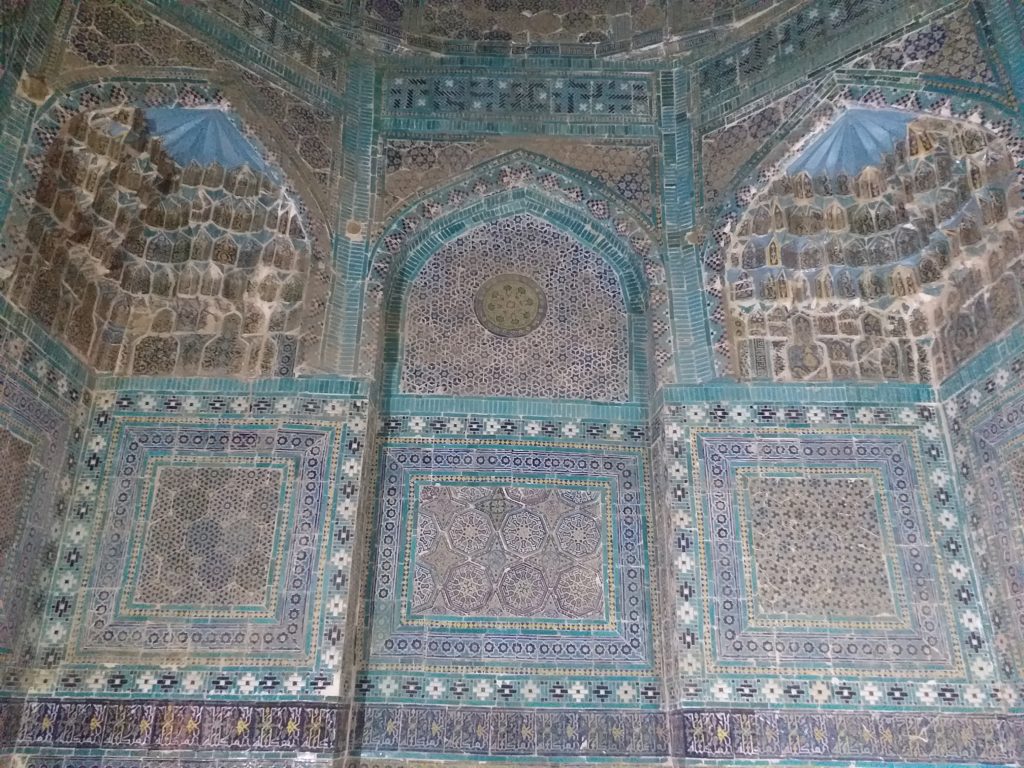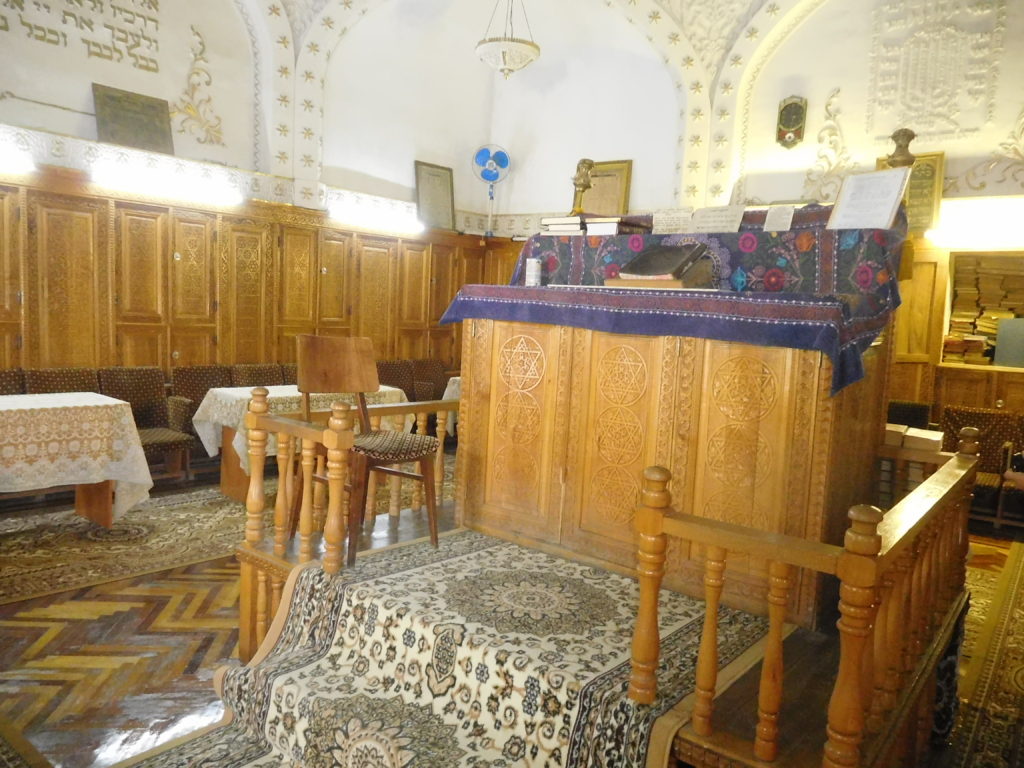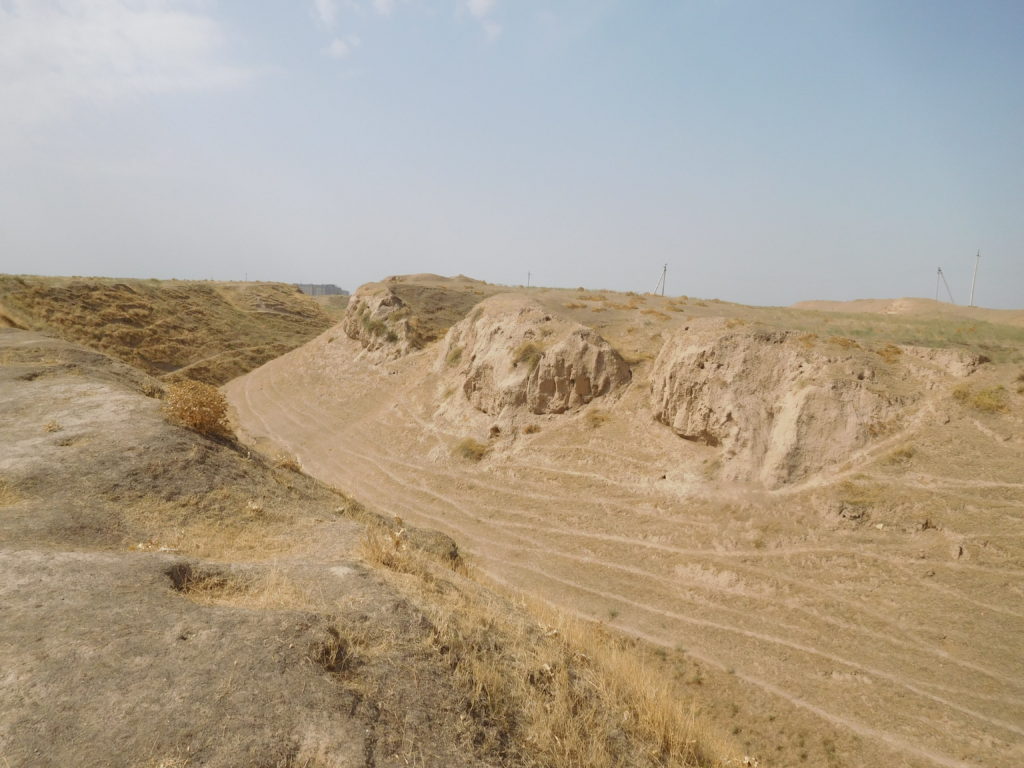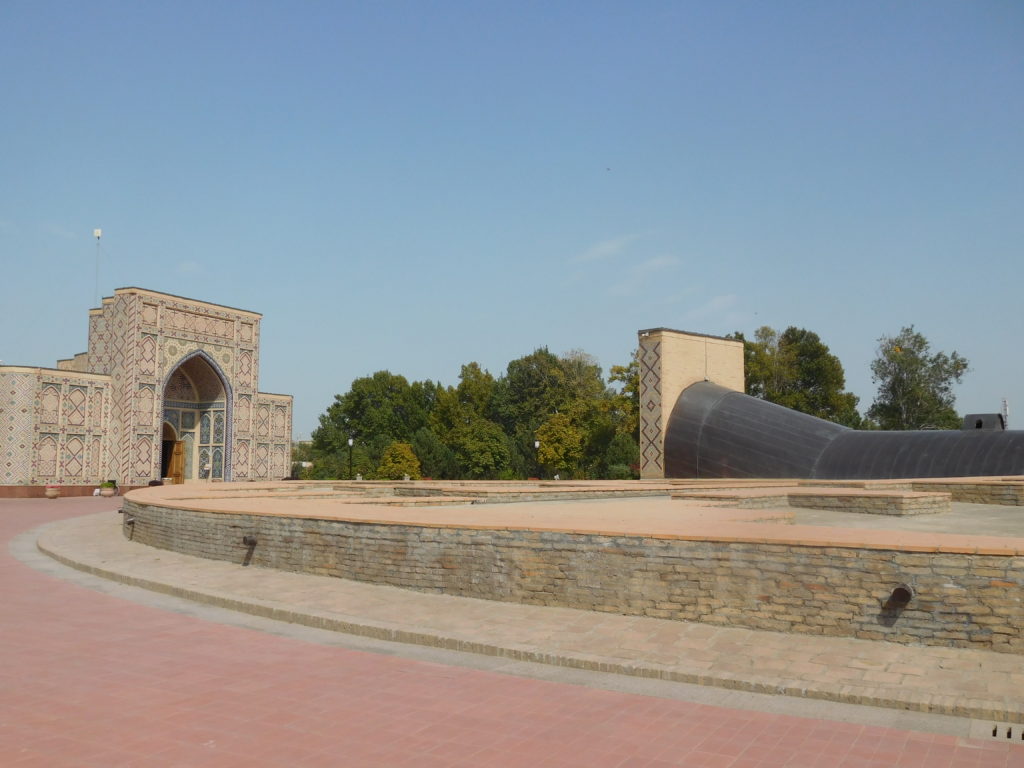Samarkand’s history stretches back an impressive 2,500 years. The remains of the town conquered by the Macedonians can still be seen at the archaeological site (Afrasiyab). In modern history, the great commander Timur (also known as Tamerlane) made Samarkand the capital of his empire in the second half of the 14th century. The city is believed to have had around 100,000 inhabitants at that time. Most monuments that can be admired today date back to Timur’s time and later periods. You should allocate at least two days for Samarkand in order to visit the most important sights and to avoid rushing around.
The most important monument of Samarkand, and the icon of Uzbekistan, is the Registan (“sandy place”), a public square surrounded by three madrasahs. On the left, there is the Ulugh Beg Madrasah, completed in 1420 under Ulugh Beg, Timur’s grandson; on the right the Sher-Dor Madrasah (the Lions’ Madrasah, with its facade decorated with representations of lions, hence the name), erected opposite the first and completed in 1636 under the Janid dynasty; the central and youngest building is the Tilya-Kori Madrasah (“decorated with gold”), also built during the Janid dynasty and founded, like the Sher-Dor Madrasah, by the ruler of Samarkand, Yalangtush Bakhodur and completed in 1666. Thanks to its shapely domes and colourful mosaics, the Registan is an extraordinarily beautiful complex and one of the most fascinating places I have ever visited.
- Samarkand: Registan
- Ulugh Beg Madrasah/Medresa Uług Bega
- Ulugh Beg Madrasah/Medresa Uług Bega
- Tilya-Kori Madrasah/Medresa Tillja Kari
- Tilya-Kori Madrasah/Medresa Tillja Kari
- Samarkand: Sher-Dor Madrasah/Samarkanda: Medresa Szir Dar
- Sher-Dor Madrasah/Medresa Szir Dar
- Sher-Dor Madrasah/Medresa Szir Dar
- Ulugh Beg Madrasah/Medresa Uług Bega
A few hundred metres to the south-west of the Registan stands the Gūr-i Amīr Mausoleum. Erected at the beginning of the 15th century, it became the burial place of Timur and other Timurids. Walking from the Registan in the opposite direction (to the north-east), you will arrive at another famous sight: the Bibi-Khanum Mosque, built by Timur between 1400 and 1404 and named after his beloved wife. It is enormous, but not well-preserved and so slightly disappointing. Opposite the mosque is the Bibi-Khanum Mausoleum, with the Siab Baazar and the Hazrat-Hyzr Mosque close by.
- Gūr-i Amīr Mausoleum/Mauzoleum Gur-i Mir
- Samarkand: Gūr-i Amīr Mausoleum/Samarkanda: Mauzoleum Gur-i Mir
- Bibi-Khanum Mosque/Meczet Bibi Chanum
- Hazrat-Hyzr Mosque/Meczet Hazrat -Hyzr
- Siab Baazar/Bazar Siabski
Several hundred metres to the east of the Hazrat-Hyzr Mosque is a complex of buildings that I found to be the biggest surprise of my whole trip, impressing me as much as, or even more than the Registan. It is the Szah-i Zinda Necropolis. This consists of more than twenty mausoleums, successively erected in the 14th and 15th centuries for dignitaries and members of the imperial family. The architecture completely blew me away: I felt as if I had found myself in a fairy tale. Colourful azure, green, turquoise and navy-blue mosaics shining in the sunlight are incredibly beautiful. It is also the most joyful necropolis I have ever visited. I arrived there at sunset and stayed until it was dark, simply unable to tear myself away from the place.
- Samarkand: Szah-i Zinda Necropolis/Samarkanda: kompleks mauzoleów Szah-i Zinda
- Szah-i Zinda Necropolis/Kompleks mauzoleów Szah-i Zinda
- Szah-i Zinda Necropolis/Kompleks mauzoleów Szah-i Zinda
- Samarkand: Szah-i Zinda Necropolis/Samarkanda: kompleks mauzoleów Szah-i Zinda
- Szah-i Zinda Necropolis/Kompleks mauzoleów Szah-i Zinda
- Szah-i Zinda Necropolis/Kompleks mauzoleów Szah-i Zinda
- Szah-i Zinda Necropolis/Kompleks mauzoleów Szah-i Zinda
- Szah-i Zinda Necropolis/Kompleks mauzoleów Szah-i Zinda
- Samarkand:Szah-i Zinda Necropolis/Samarkanda: Kompleks mauzoleów Szah-i Zinda
- Samarkand/Samarkanda
Turning off the spruced up pedestrian precinct connecting the Registan with the Bibi-Khanum Mosque and Siab Baazar towards the east will take you into the Jewish Quarter. If it hadn’t been for the map on my mobile, I’m sure I would have had great difficulty finding it – you need to find a gate in the fence hiding the poorer streets from the eyes of tourists. The quarter is Jewish not only by name: Samarkand is still inhabited by a small community of Jews. Having said that, it’s still easier to find a mosque than a synagogue in the area. However, the mosques are generally closed, at least to female visitors, whereas the tiny but beautiful Gumbaz Synagogue, erected at the end of the 19th century, is open to the public. It is guarded by an elderly man who doesn’t sell tickets, but will happily accept contributions.
- Gumbaz Synagogue/Synagoga Gumbaz
Around 1.5 km to the north-east of the Hazrat-Hyzr Mosque is the State Museum of History of Culture of Uzbekistan, housing marvellous frescoes from the royal palace dating back to the 7th century. Next to the museum is the archaeological site Afrasiab (for archaeology lovers and particularly determined tourists). Further to the north (another 1.5 km) you will come across the Ulugh Beg Observatory from 1429 (for astronomy lovers and particularly determined tourists).
If you only have one day to spend in Samarkand, you really must visit the Registan, the Szah-i Zinda Necropolis, the Gūr-i Amīr Mausoleum and the Bibi-Khanum Mosque.
- Archaeological site Afrasiab/Stanowisko archeologiczne Afrasiab
- Ulugh Beg Observatory/Obserwatorium Uług-Bega


